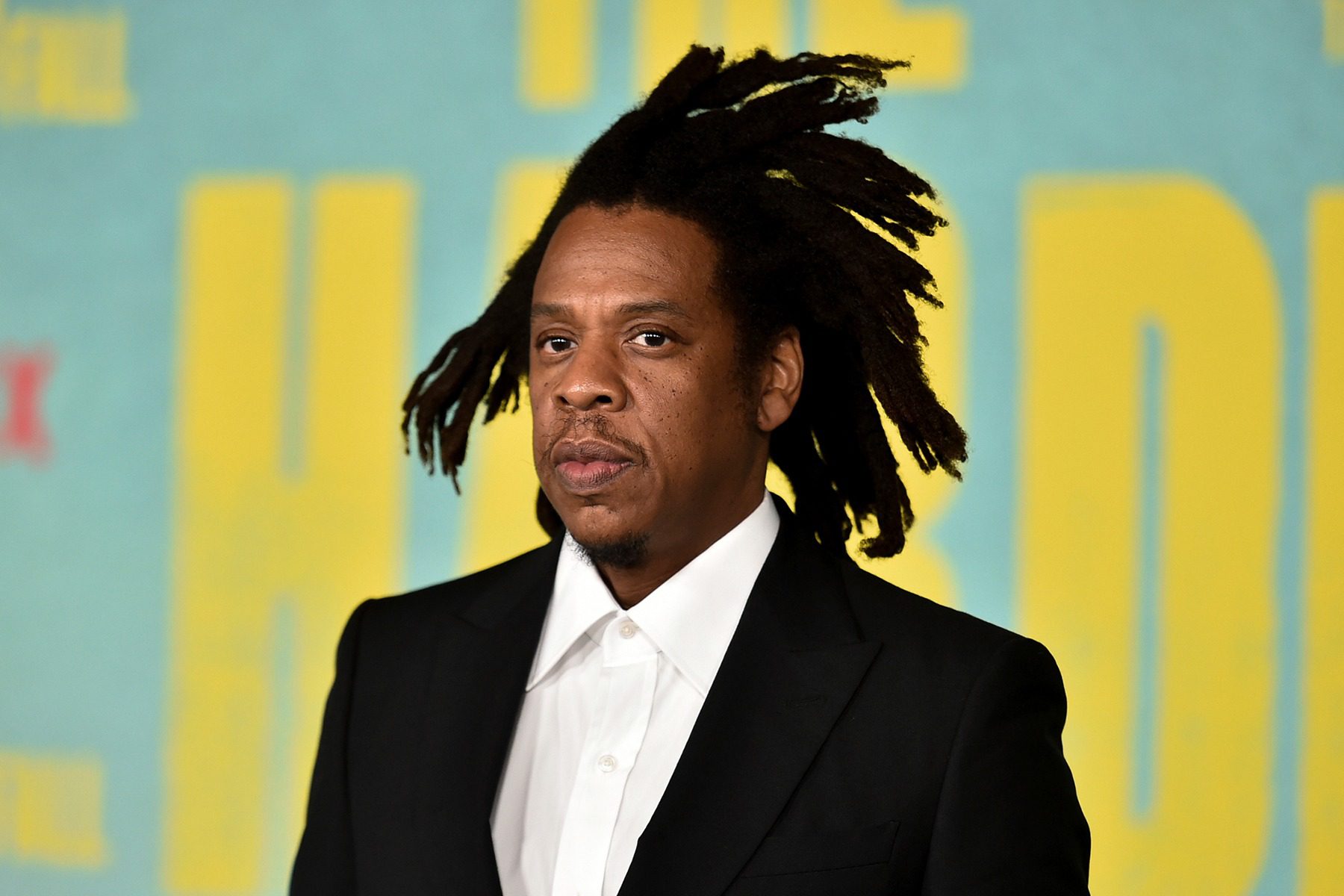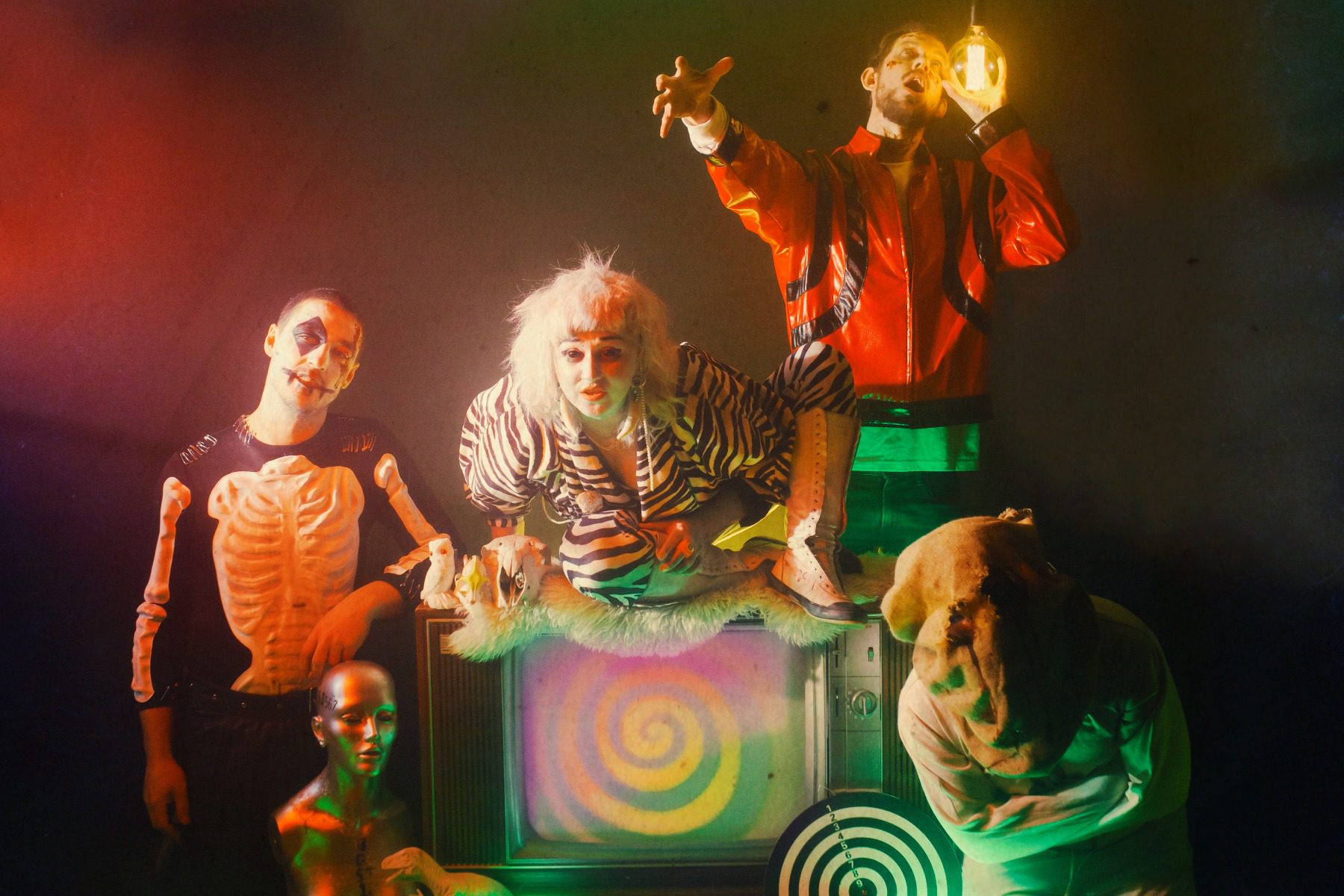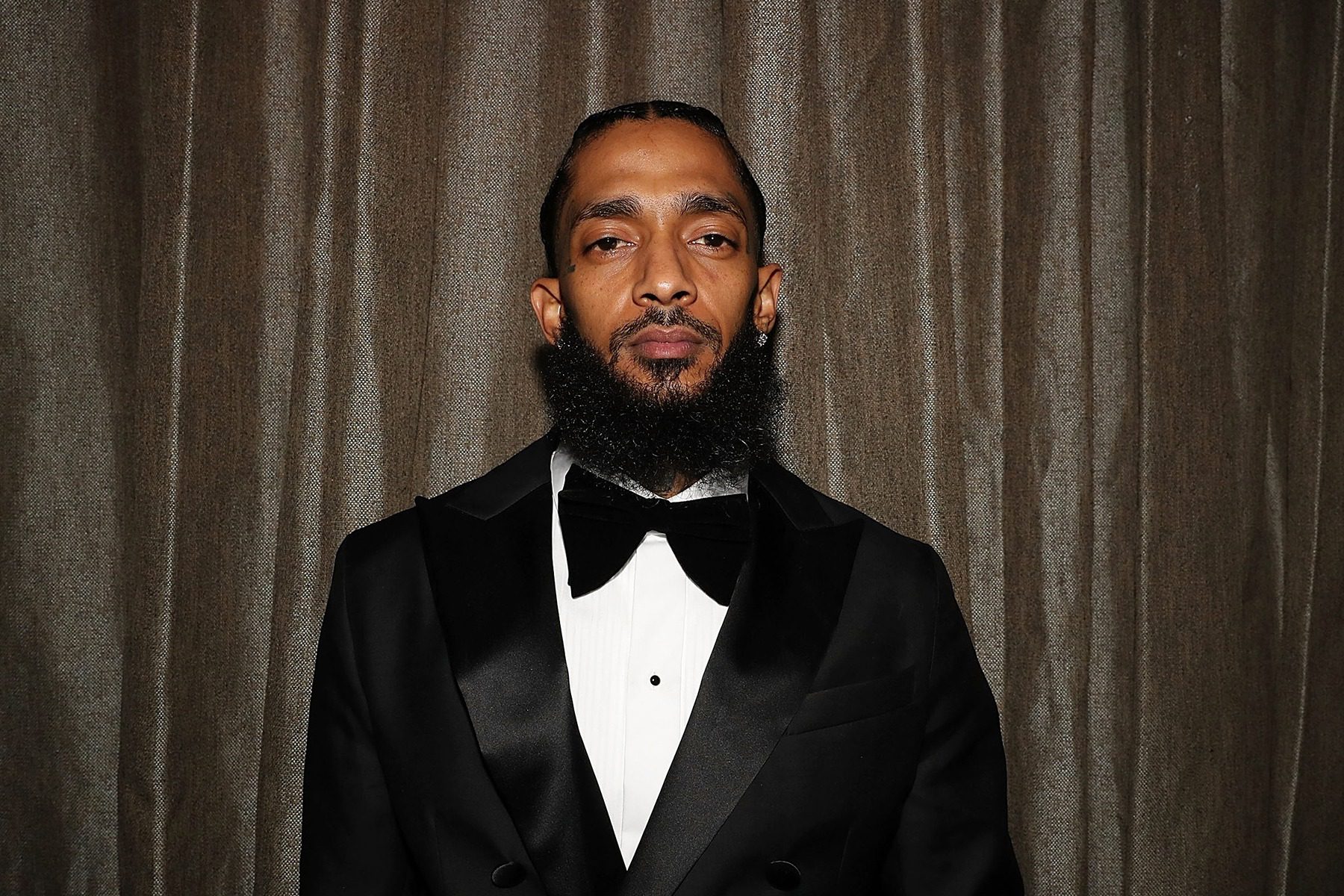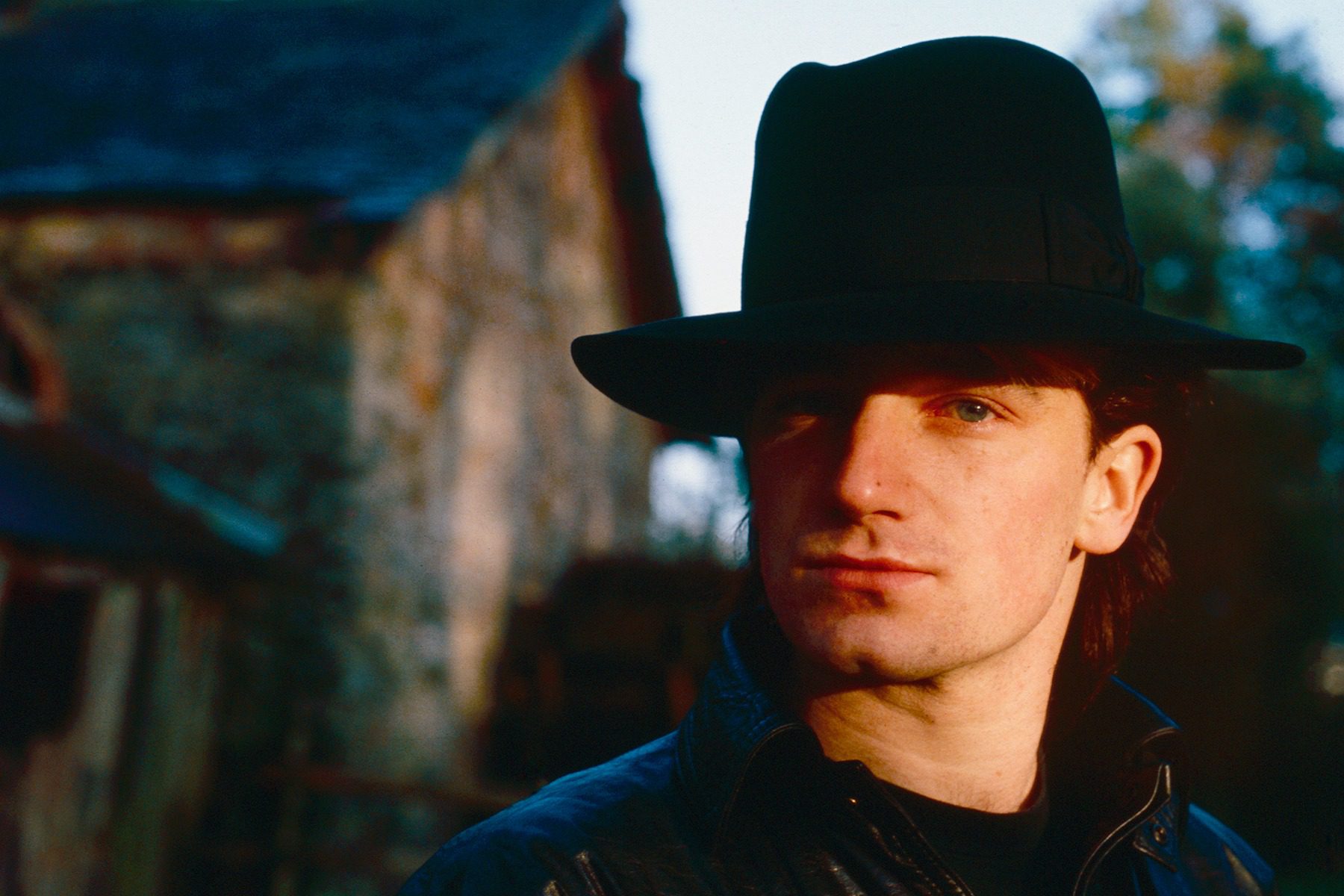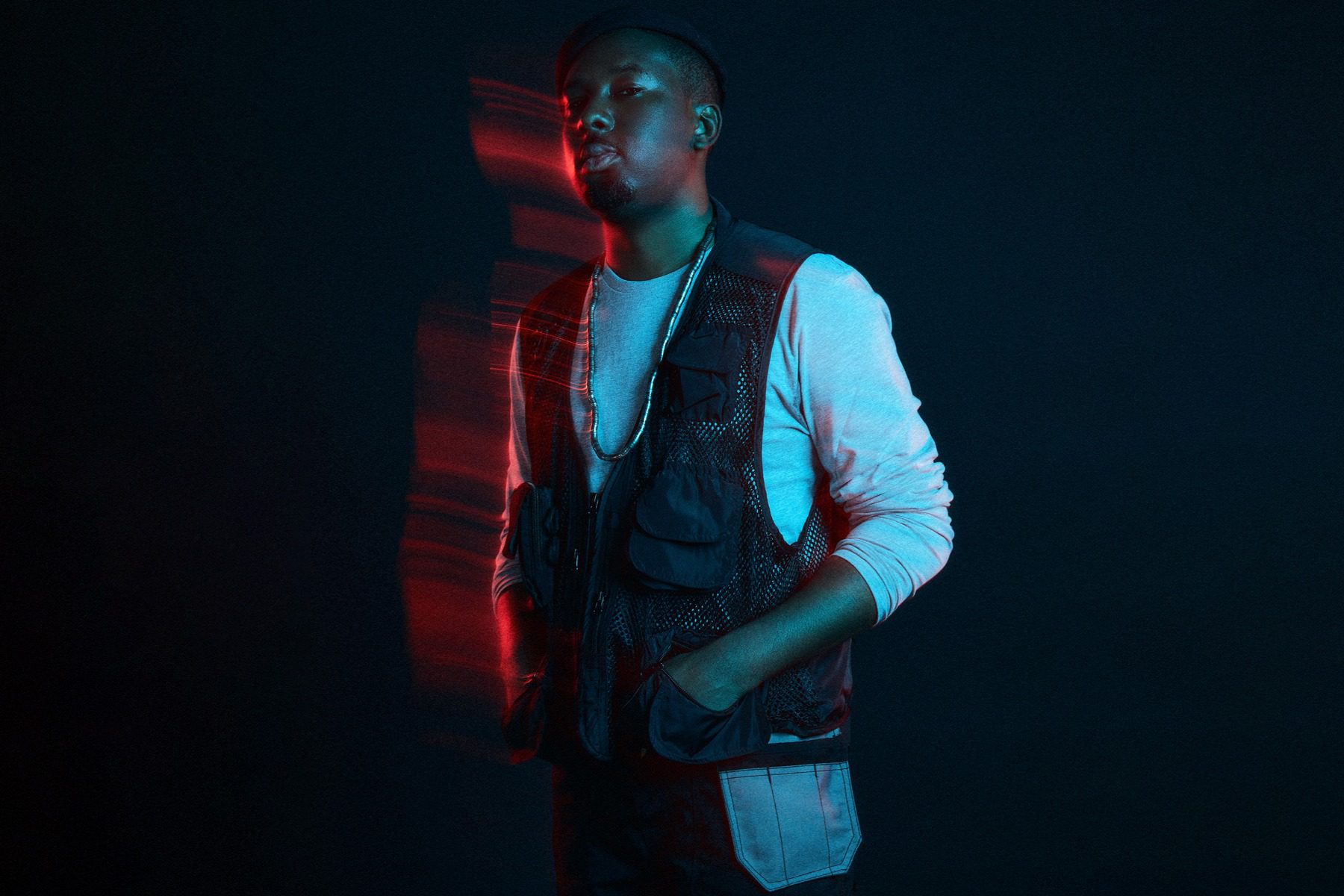
Tuba Luminary Theon Cross Wants to Bring the ‘Life Force of Breath’ to All Your Bass Lines
Intra-I, the second album by tuba player and London jazz star Theon Cross is many things — a deeply personal exploration of self, a remarkable achievement in the possibility of sound, and also the perfect sales pitch. A 10-point plan that declares, “You want the coolest possible bass sound on your record? Don’t settle for a bass guitar or synth. Try the tuba.”
“You need the life force of breath in your bass line,” as Cross put it in a recent interview with IndieLand.
Cross, 28, has been playing the tuba since he was a teenager, and he’s carved out a career that upends whatever expectations one might have of the famously bulky horn. In the London jazz world, he anchors Shabaka Hutchings’ acclaimed group Sons of Kemet, is a member of the celebrated Steam Down Collective, and plays regularly with other budding heavyweights like saxophonist Nubya Garcia and drummer Moses Boyd. He’s also played on records by Emeli Sandé and Angélique Kidjo, as well as grime superstar Stormzy. In 2017, Cross and his tuba were onstage at Glastonbury, part of the live touring band for another grime great, Kano.
blogherads.adq.push(function () {
blogherads
.defineSlot( ‘medrec’, ‘gpt-dsk-tab-article-inbody1-uid0’ )
.setTargeting( ‘pos’, [“mid-article”,”mid”,”in-article1″,”mid-article1″] )
.setSubAdUnitPath(“music//article//inbody1”)
.addSize([[300,250],[620,350],[2,2],[3,3],[2,4],[4,2],[640,250]])
;
});
Cross has steered his career with a desire to return the tuba to the pedestal it once occupied in the early days of jazz, when New Orleans bands couldn’t march around with an upright bass, and only the tuba was loud enough to register on early audio recording equipment. Both his CV and stellar solo debut, 2019’s Fyah, speak to the success he’s had in that realm; on Intra-I, he broadens his purview to music from all over the African diaspora — dub and dancehall, soca and reggae, Afrobeat, hip-hop, and grime.
While making Intra-I, Cross read Sounds Like London: 100 Years of Black Music in the Capital, a 2013 book by veteran music journalist Lloyd Bradley. “It was important for me to see myself, and where the London jazz scene sits in the timeline of Black British music,” Cross says. What struck him most was the way sound-system culture — the wildly popular DJ/MC-led parties in Jamaica — crossed the Atlantic with West Indian immigrants in the post-WWII Windrush generation and began to influence the music being made in London.
“It’s gone from reggae sound system to jungle to garage to grime, and I felt like, me and my contemporaries, we reference sound-system culture, but with instruments,” Cross says. ” What we’re doing — and I was really able to understand this when I read that book — is bringing it full circle. We have an understanding of the sound-system sensibility but we’re doing it live.”
While Cross made Fyah with a more traditional jazz combo set-up, Intra-I was almost entirely a collaboration with producer Emre Ramazanoglu. Cross did enlist several guest vocalists, but aside from percussion and scattered synths, every sound on the album was made by his tuba. In the liner notes, Cross thanks Ramazanoglu for “showing me the world of sound possible on my instrument.” One remarkable example is a riff that skitters across the mix halfway through “We Go Again” — a swift staccato pluck you’d bet your family dog was a guitar, but is actually Cross’ tuba run through a vocoder.
“I knew you could do a vocoder with guitar and piano,” Cross says. “I didn’t know you could add it to a brass instrument.”
But all the technical marvels on the album, Cross continues, were crafted with care and balance in mind: “I really needed someone who understood bass frequency and how to make the tuba a force, but still make it sound like a tuba. You can manipulate it so much that it doesn’t sound like that. But Emre was very cautious of still making it sound like a tuba. You can hear a lot of the breathing, so you know it’s the same bass sound you’d get in grime or trap, but it’s a human being playing it.”
Intra-I is an album steeped in identity, spirit, and discovery, from Cross’ desire to explore the potential of the tuba, to the album’s thematic concerns (“Intra-I” meaning “within self”). Cross was already kicking around these ideas before the pandemic, and the subsequent solitude allowed him to sink deeper into them and find ways to cope with the chaos unfolding in the world, as well as a more personal tragedy, the death of his father. Here, Cross discusses the work that went into making his tuba sound just right in different genres, collaborating with vocalists for the first time, and how rediscovering old recordings made by his dad’s band, Nyanisis, helped clarify the journey he was already on.
blogherads.adq.push(function () {
blogherads
.defineSlot( ‘medrec’, ‘gpt-dsk-tab-article-inbody2-uid1’ )
.setTargeting( ‘pos’, [“mid-article2″,”mid”,”in-article2″,”mid-article”] )
.setSubAdUnitPath(“music//article//inbody2”)
.addSize([[300,250],[300,251],[620,350],[2,4],[4,2],[3,3]])
.setLazyLoadMultiplier(2)
;
});
Intra-I centers on ideas of self-discovery and the inner journey. Did the imposed solitude of the Covid era change the way you were thinking about those things, or help crystalize them?
It gave me the time to really think about it. Obviously, the world was in a difficult place, the news was getting scary, and we’re all in a place of uncertainty. But there was a level of accepting that things are what they are, and things will return when they are able to. That gave me a sense of peace and time to really think about what I was trying to express in the music. At the very start of the pandemic as well, my father passed away, so that was just another means to zone out of the world and really reflect, meditate, think about family, think about my historical journey through through him, through my mother, and really explore that through this album.
You recently posted on Instagram about a show in London and you mentioned you spent a good chunk of lockdown figuring out new techniques to perform this album live. What can you tell me about those?
I was really scratching my head with this record — how am I supposed to do this? Then a few friends put me onto a loop station called the Boss RC 505 that lets you overlay yourself, literally creating textures and adding effects on the songs you create. So I started teaching myself on YouTube how to use it and create a show around it. I also got into a device called the MPC Live, which I started using to load samples and create interesting textures by myself, but I also used it as a standalone beat-making software. I was really using YouTube to learn [these machines] as new instruments, basically, and perform so much of the music that is literally just me layering myself.
Tell me about some of your earliest ideas for this record and how they developed.
From the beginning, the record was about developing the possibilities of what I can create solo with the instrument and going into self through the practical means of the tuba. During the pandemic, it was also a means to go into self mentally and understand self more — do more meditation, think about the changes I wished to see once it got back to normal. A lot of the internal lessons I learned, I put into the titles and the intentions of the music. So, “We Go Again,” is about the start of the journey, about going into self and leaving the old self behind. And, if we’re starting from here, what is the next step and what do we wish to see? Things like “Trust the Journey” — life sometimes, you’ve got tribulations and things get in your way, where you don’t really know which direction you’re going, and it’s just about trusting that you’re doing the right thing.
blogherads.adq.push(function () {
blogherads
.defineSlot( ‘medrec’, ‘gpt-dsk-tab-inbodyX-uid2’ )
.setTargeting( ‘pos’, [“mid”,”mid-articleX”,”in-articleX”,”mid-article”] )
.setSubAdUnitPath(“music//article//inbodyX”)
.addSize([[300,250],[300,251],[3,3],[620,350]])
.setLazyLoadMultiplier(2)
;
});
Emre Ramazanoglu has a really eclectic CV. How did you two link up, and why was this the right partnership for Intra-I?
I’d seen him perform a few times with a band called Ill Considered — he’s a drummer. I met him through my manager and we’re labelmates on New Soil. Once I met him and explained the project, he understood right away what I was after and how to do it. We started first on “We Go Again,” and just clicked. I didn’t have to explain anything. I didn’t have to be like, “Oh, I want the tuba to sound like this.” Or, “If, melodically, the range of the instrument is up here, you need to put this effect on it.” When you’re doing an album where it’s the same instrument on top of itself, it’s very easy for it not to work [laughs]. His production skills and his ability to really understand the ideas I was having — it was a beautiful chemistry. It’s a relationship I’m definitely going to continue.
This is also your first album with vocalists. What compelled you to incorporate that element?
Definitely the themes. As I was getting more personal with the messages about introspection, I wanted to get in touch with people who could speak to that more clearly than I could express through notes. It was just about finding the right people. So I looked to my my circle. I’m a member of a group called Steam Down Collective, which has some incredible writers like Afronaut Zu and Ahnansé [who appear on “The Spiral”]. It was about me vividly stating to them what it’s about and what it means, but for them to add their individual take. That was a really great experience, and a new experience, because that’s a skill I don’t have [laughs]. I wouldn’t call myself a lyricist. So to observe people who do have that skill tap into something I’m conceptualizing was amazing.
“Intro” features a poem by Remi Graves — was that a piece she had that you liked, or something you asked her to bring to the project?
It’s something I’d asked her to bring. I’d actually asked her to be on “We Go Again,” but what she was saying needed a bit more ambience. “We Go Again” was supposed to be the first track, so conceptually that’s what she was speaking to — we go again, we move, we learn from ourselves and we start again — but the music to accompany what she provided needed to be a bit more solemn and introspective. It was a bit of a happy accident there. I had to give her something else to complement what she was saying.
“Roots” has an excellent performance by Shumba Maasai, whose lyrics are both in English and Shona. What can you tell me about his verse and that song?
He was the last vocalist I found. It was really hard to find a vocalist for that one, even though it’s a conventional hip-hop groove. Shumba is part of a night called Ancestral Futures, which is a great night that has a lot of conscious Black artists from London. I was trying to find an artist that could speak to using the roots in the past to go forward. The name “Ancestral Futures” was just a win already. And we both had an affinity for Marcus Garvey, his works, his philosophies and his ideology of Black unity. It was the conversations we had that made him tap into his own journey. I think what he’s expressing in his own language is very much about his journey and his roots, going back to Zimbabwe and being in London and what we need to do to progress. It was really born out of conversation, but just giving him the freedom to express himself and tell his story.
blogherads.adq.push(function () {
blogherads
.defineSlot( ‘medrec’, ‘gpt-dsk-tab-inbodyX-uid3’ )
.setTargeting( ‘pos’, [“mid”,”mid-articleX”,”in-articleX”,”mid-article”] )
.setSubAdUnitPath(“music//article//inbodyX”)
.addSize([[300,250],[300,251],[3,3],[620,350]])
.setLazyLoadMultiplier(2)
;
});
Tell me about the work that went into tackling all these different styles of music using just your tuba.
One is to have the cultural sensibility. Like, if I’m playing a reggae groove, like on “Forward Progression II,” what the feel of that is. Because obviously it would normally be a bass player doing these parts, or a synth. So it’s about understanding how these other types of bass instruments move to be able to recreate that. On a soca track, on a grime track, on a dub track, all of these different bass parts have a way that they move, and I think my challenge is to know how to operate with the tuba in those sonic spaces. Secondly, I think it is very much about getting the right sound with the production. “Forward Progression II” required so much more bass and heaviness than other tracks because it’s a dub track. So it’s also in the production to help figure out what type of tuba are we bringing and what sound are going for, to be able to complement the sound we’re trying to reference.
Were there any tracks where that was particularly challenging?
“Play to Win” was one where we really had to think about what the sound would be. Grime often has synthesized strings and brass anyway, but the sound had to be brighter. It couldn’t be as dubby and weighted; it had to reference more of the top side to get the aggression. Definitely in a production sense and playing a bit more aggressively on that track as well, because it’s so fast and hyped.
That one sounds just like a classic grime track. Had you ever made anything quite like that before?
I think the closest on my last album might’ve been “Activate.” But working with electronic instruments made it sound closer to the reference point. Those grooves are so complicated and tricky that you could get a drummer to do it, but the sound of that is rooted in electronic instruments and electronic game sounds. Then I just had to find the right MC, which was my good friend Consensus.
There’s a great clip of grime legend Jme freestyling over the Fyah song “Panda Village.” What do you think an MC like him hears in a track like that, that makes him want to rap over it?
The drum parts. So much of [grime] is the creative drumming. It’s never just a basic boom-clap; all of them are really written parts, and that’s something I’ve always taken influence from. For the last five years, I’ve had the opportunity to tour in Kano’s live band, and just seeing the creativity he can have rhythmically on that tempo just makes me think, “What kind of drum groove or bass pattern do I need to make that can bring out the creativity in someone who is gifted rhythmically in that sense?” I feel like I pushed my musical writing and production skills to bring out the best in someone else.
blogherads.adq.push(function () {
blogherads
.defineSlot( ‘medrec’, ‘gpt-dsk-tab-inbodyX-uid4’ )
.setTargeting( ‘pos’, [“mid”,”mid-articleX”,”in-articleX”,”mid-article”] )
.setSubAdUnitPath(“music//article//inbodyX”)
.addSize([[300,250],[300,251],[3,3],[620,350]])
.setLazyLoadMultiplier(2)
;
});
View this post on Instagram
You play with Kano and you’ve also worked with Stormzy. Did you ever think your jazz world would collide with grime like it has during the past few years?
I don’t think I could’ve seen myself collaborating with them back when I was learning. But I think it signifies the growth in the genre — in both genres, really. As rap and grime are maturing and becoming, I guess, “grown music,” loved by different ages, I think the artists are all wanting to collaborate and expand their craft with musicians. And there’s a generation of people like me who grew up on these MCs. They are the main artists that we look up to right now. There are many rappers that want to tap into their musical resources, and there are a lot of musicians that want to help them. It’s a very interesting time.
“Forward Progression II” is a tribute to your father and was inspired by some recordings you found of his old band, Nyanisis. What was it like coming across those, and what did you hear in his music that helped clarify some of the ideas you were working with?
The chorus [in his song, which you can hear a bit of on Instagram] was, “Forward progression, you got to know yourself first.” And I think Intra-I, meaning “within self,” “know thyself, know who you are,” that’s generally the theme. His title, “Forward Progression,” we move forward, we’re hoping for better for ourselves, but we have to know who we are first — that really resonated and basically summed up what I was trying to say.
Some of that music I hadn’t heard for years. It was only as I was cleaning up after he passed that I found it. He hadn’t progressed in music, so he could raise myself and my brother and sister. So to go back in time and hear some of that music, and know that where I am in my life is coming from the same place that he was trying to express 40 years ago — it was just significant and I’m just the continuation. I was going to call the song just “Forward Progression,” but I was like, “No I have to add the ‘II,’ because it’s a continuation of something that’s come before.” It was universal alignment — as the last track says! [Laughs] It was all aligned for it to be that way.
I bought a cassette-to-digital converter and relived so many songs I hadn’t heard in so long, and I was finally old enough to understand what he was saying. … I think he was very proud of his music. I just think life takes over. You end up raising kids and you just put certain things aside to focus on other things. But it is amazing what you leave behind — it’s there forever to be utilized. It’s definitely my life’s mission to release that music.
You mentioned “universal alignment,” which is also the name of the last song on the album, and it features your former tuba teacher Oren Marshall. How did you two compose and conceptualize that song?
When my dad passed, [Oren] was someone who reached out to me, and we met up and talked. And although he was my teacher, on a man-to-man [level], we really reconnected. It wasn’t my intention to make a track with him at that point, but he doesn’t live far from me, and he came over to check up on how I am, and it felt like the right thing to do. Especially with the whole concept of going back and looking back on your ancestry in many ways, he was the person that I looked up to and saw in the position I am now in, in the tuba space. We improvised for about an hour, just two tubas, and cut out the best bit.
You’ve spoken about how restoring the tuba to its proper place as the original bass instrument in jazz has been a driving creative force for you — is that still true?
Definitely. I think this album is a continuation of that, and now beyond jazz into commercial music spaces. If I could reposition the tuba’s place in a more constructive space in modern music, where it’s not seen as a niche thing, that would be great. If, after this album, people listen and think, “All of this was possible with an instrument like this, and we didn’t know that then, but we know that now” — that would be a beautiful thing.
blogherads.adq.push(function () {
blogherads
.defineSlot( ‘medrec’, ‘gpt-dsk-tab-inbodyX-uid5’ )
.setTargeting( ‘pos’, [“mid”,”mid-articleX”,”in-articleX”,”mid-article”] )
.setSubAdUnitPath(“music//article//inbodyX”)
.addSize([[300,250],[300,251],[3,3],[620,350]])
.setLazyLoadMultiplier(2)
;
});
